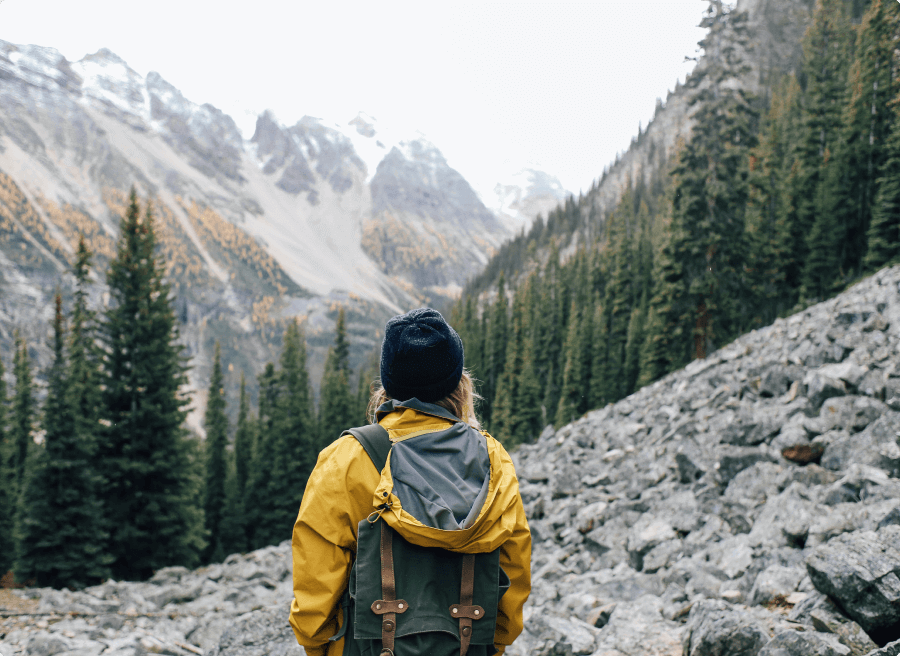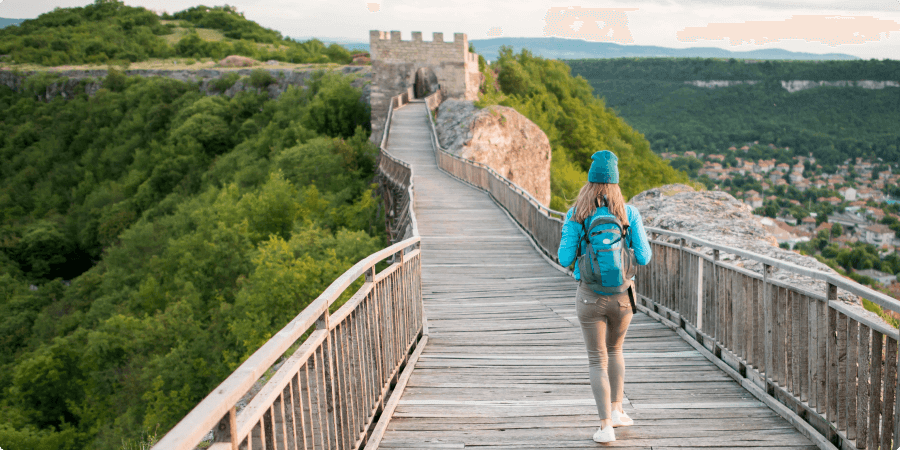Discover the hidden gems of breathtaking landscapes through its 5 best winter treks in Nepal. Each step becomes a journey through time and nature’s grandeur. From the iconic Annapurna Circuit to the mystical trails of Langtang, these winter treks promise not just an adrenaline rush but an immersion into the heart of a serene, snow-kissed paradise that will etch indelible memories in the core of your adventurous spirit. Embrace the chill, and feel yourself into the unparalleled beauty of Nepal’s winter wonderlands.
1 Mardi Himal Trek
The Mardi Himal is a captivating journey that spans a duration of 7 to 10 days, offering trekkers a moderate level of difficulty. It is an ideal adventure for those seeking a balanced challenge without the extremities of high difficulty. This trek is particularly enchanting during the winter months, from December to February, when the landscape is draped in snow, creating a serene and picturesque atmosphere.
Winter temperatures along the Mardi Himal Trek can fluctuate between -5°C to 10°C, and in higher altitudes, one can anticipate encountering snowfall, adding an extra layer of magic to the trekking experience. The cool, crisp air and the snow-covered vistas contribute to a unique and memorable journey.
For those planning to go on this winter trek. Trekkers are advised to pack layered clothing to adapt to varying temperatures throughout the journey. Insulated and waterproof gear becomes essential to shield against the winter elements, ensuring comfort and safety. Sturdy trekking poles provide stability on uneven terrain, and investing in high-quality trekking boots is imperative for traversing through snow-covered paths.
A well-thought-out itinerary is crucial for a successful Mardi Himal Trek. Trekkers should plan their route carefully, considering factors such as acclimatization days to adjust to the increasing altitude. These rest days are strategically placed to allow the body to acclimate, reducing the risk of altitude-related issues.
The Mardi Himal Trek in winter offers a moderate challenge amid breathtaking snow-covered landscapes. Adequate preparation with layered clothing, insulated gear, quality boots, and trekking poles, along with a well-designed itinerary that incorporates acclimatization days, ensures a rewarding and safe trekking experience in the enchanting Himalayas.
2 The Annapurna Base Camp
(ABC) Trek invites adventurers on a journey lasting between 10 to 14 days, offering a moderate to challenging level of difficulty. This trek provides a balanced blend of excitement and challenge, making it suitable for those seeking a more invigorating mountain experience.
Undertaking the ABC Trek in winter, from December to February, introduces trekkers to an environment where temperatures at higher elevations can plummet to as low as -15°C. While the skies are generally clear, the cold weather imparts a unique charm to the trek, with crisp air and stunning views.
For those gearing up for the ABC Trek, thorough preparation is key. The biting cold necessitates warm and waterproof clothing to shield against the chilly temperatures and potential snowfall. High-altitude trekking boots become indispensable for navigating through icy and uneven terrains. Carrying a sleeping bag suitable for sub-zero temperatures ensures a comfortable night’s rest amidst the cold mountain nights.
Acclimatization, a crucial aspect of any high-altitude trek, is particularly emphasized for the ABC Trek due to its challenging terrain. Trekkers are advised to acclimatize gradually, allowing their bodies to adjust to the increasing altitude and reducing the risk of altitude sickness.
Physical fitness assumes paramount importance on this trek, given the demanding landscape. The undulating terrains and occasional steep ascents require trekkers to be in good shape. Pre-trek conditioning, including cardiovascular and strength exercises, helps build the stamina required to navigate the challenging paths leading to Annapurna Base Camp.
The Annapurna Base Camp Trek during winter promises a thrilling adventure amidst the icy grandeur of the Himalayas. Adequate preparation, including warm clothing, proper gear, acclimatization, and physical fitness, ensures a safe and memorable journey to one of the most iconic base camps in the region.
3 Langtang Valley Trek
Langtang offers a captivating journey spanning 7 to 12 days, characterized by a moderate level of difficulty. This trek provides an excellent balance for those seeking an immersive mountain experience without the extreme challenges associated with high-altitude treks.
Trekking on the Langtang Valley Trek during the winter months, from December to February, exposes trekkers to a climate where temperatures can fluctuate between -10°C to 5°C. Occasional snowfall adds a touch of enchantment to the landscape, transforming the valley into a winter wonderland. Despite the cold, clear skies are a common feature, offering panoramic views of the surrounding peaks.
To prepare for this winter trek, trekkers are advised to adopt a strategic approach. Layered clothing is essential to accommodate the varying temperatures encountered along the route. Waterproof gear becomes imperative to guard against potential snowfall and ensure comfort during the trek. Sturdy hiking boots with good traction provide stability on uneven and possibly icy terrain.
A quality sleeping bag designed for cold temperatures is a must, ensuring a cozy and warm night’s sleep in the chilly mountain environment. Given the potential altitude challenges, acclimatization is crucial. Trekkers should plan for rest days strategically placed along the route, allowing their bodies to adjust gradually to the increasing altitude and reducing the risk of altitude-related issues.
Physical conditioning is another key aspect of preparation for the Langtang Valley Trek. While the trek is rated as moderate, the undulating terrain may present challenges, especially for those less accustomed to hiking. Engaging in cardiovascular and strength training exercises before the trek enhances overall fitness and endurance, contributing to a more enjoyable experience.
The Langtang Valley Trek in winter offers a moderate yet captivating adventure amidst snow-covered landscapes and clear mountain skies. Proper preparation, including layered clothing, waterproof gear, sturdy boots, and a focus on acclimatization and physical conditioning, ensures a safe and rewarding trek through the pristine Langtang Valley.
4 Everest Base Camp Trek
The Everest Base Camp (EBC) Trek stands as an iconic and challenging adventure, spanning a duration of 12 to 16 days. This trek is renowned for its difficulty, presenting a formidable challenge to trekkers who aspire to reach the base of the world’s highest peak.
Undertaking the EBC Trek during winter, from December to February, exposes adventurers to an environment where temperatures can plunge to -20°C or even lower, creating harsh and demanding conditions. However, despite the cold, trekkers can expect clear skies that provide breathtaking views of the Everest region.
Preparation for the EBC Trek in winter requires a meticulous approach. High-quality cold-weather gear is paramount to withstand the extreme temperatures encountered at higher elevations. A down jacket provides insulation against the biting cold, while thermal layers offer additional warmth. Insulated boots with good traction are essential for navigating through icy and challenging terrains.
Carrying a reliable sleeping bag designed for sub-zero temperatures is crucial for a restful night’s sleep in the frigid mountain environment. Acclimatization assumes heightened importance on the EBC Trek due to the high altitude. Trekkers should plan for strategic rest days to allow their bodies to adapt gradually to the increasing altitude, mitigating the risk of altitude-related ailments.
Physical fitness is a non-negotiable aspect of preparation for the EBC Trek. The challenging terrain and high altitude demand a good level of stamina and endurance. Engaging in comprehensive physical training, including cardiovascular exercises and strength conditioning, ensures that trekkers are adequately prepared for the demanding ascent.
The Everest Base Camp Trek during winter is a challenging yet immensely rewarding expedition into the heart of the Himalayas. Adequate preparation, featuring high-quality gear, emphasis on acclimatization, and a commitment to physical fitness, are imperative for a safe and successful journey to the legendary Everest Base Camp.
5 Annapurna Circuit
The Annapurna Circuit Trek is an adventurous odyssey that unfolds throughout 14 to 21 days, offering a challenging yet profoundly enriching experience. Known for its diverse landscapes and high-altitude challenges, this trek is an ideal choice for those seeking an extended and immersive Himalayan journey.
Undertaking the Annapurna Circuit during the winter months, from December to February, exposes trekkers to a climate where temperatures can range from –10°C to 5°C in lower altitudes, while higher elevations experience even colder conditions. Despite the cold, clear skies prevail, providing awe-inspiring views of the surrounding peaks and landscapes.
Preparation for the Annapurna Circuit in winter requires a comprehensive approach. Cold-weather gear is essential to combat the freezing temperatures, including insulated layers, a down jacket, and thermal clothing. Waterproof clothing becomes imperative to shield against potential snowfall and ensure comfort during the trek. Sturdy trekking boots with good ankle support and traction are essential for navigating varied terrains, which may include snowy paths.
Crafting a well-planned itinerary is crucial for a successful Annapurna Circuit Trek. Trekkers should account for the challenging terrain, potential weather variations, and strategic acclimatization days. Due to the trek’s length and altitude, physical fitness plays a pivotal role. Engaging in pre-trek conditioning, including cardiovascular exercises and strength training, helps build the stamina required for the extended journey.
Altitude acclimatization is a critical aspect of preparation, especially given the trek’s high elevations. Trekkers should plan for gradual ascents and strategically placed rest days to allow their bodies to adapt to the increasing altitude, minimizing the risk of altitude-related issues.
The Annapurna Circuit Trek during winter promises an exhilarating but challenging expedition through diverse landscapes and varying altitudes. Adequate preparation, including comprehensive cold-weather gear, waterproof clothing, sturdy boots, and a well-thought-out itinerary, ensures a safe and fulfilling journey. Physical fitness and acclimatization are paramount, enhancing the overall experience of this epic trek through the stunning Annapurna region.
In conclusion, going on a trek in Nepal during the winter season promises an extraordinary adventure of the breathtaking landscapes of the Himalayas. The unique challenges and rewards of winter trekking in this region create a wonderful experience. From the snow-covered trails to the crisp mountain air, trekkers are treated to a pristine and serene wilderness that stands in stark contrast to the bustling scenes of other seasons.












